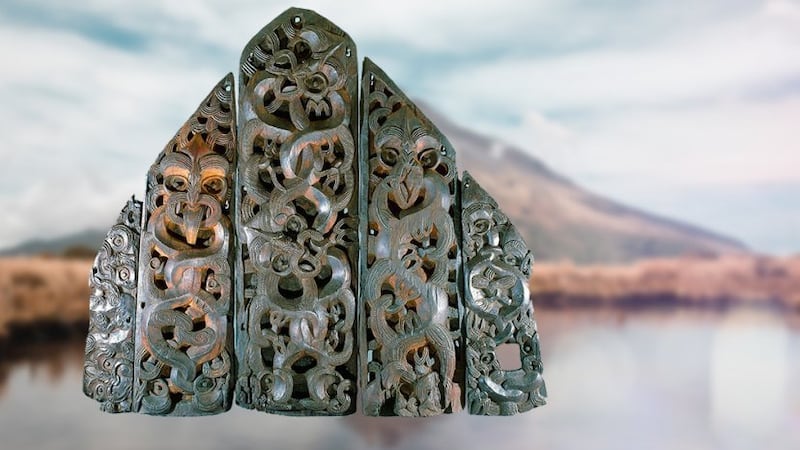More than 200 years ago when Taranaki was teetering on the edge of what would be almost a century of war, Te Atiawa hapū dismantled its most important public buildings and hid significant pieces in the Peropero swamps, north of Waitara.
Five interconnected-carved tōtara panels probably made to form the walls of a pātaka (storehouse), survived the war and land theft but were smuggled out of New Zealand 150 years later by a collector, who took them to New York, Geneva and London.
Now, a new book that launched last night tells their story.
Te Motunui Epa, by author and historian Dr Rachel Buchanan (Taranaki, Te Atiawa), is a compelling illustrated narrative that draws on government documents recently made public to convey a tale of art, ancestry, and power.
Buchanan says the epa were believed to have been made between 1750 and 1820.
“I don’t know the names of the tohunga whakairo who made these works but, to me, that’s not the most important thing.
“These masterpieces were created at the end of the old world but obviously by people who didn’t know that that world was coming to an end.
A worldwide journey for taonga has its story told in new book.
Uncovered but sold overseas
“I see them as a taonga for all uri of Taranaki.”
A digger accidentally uncovered the panels in 1971, at a time Buchanan says was a time of “great energy and activity”.
“You had the Māori language petition, all the lands rights protests in Raglan and Auckland, and the epa emerged around that time.”
But the person who dug the pātaka up chose to sell it to Switzerland-based collector George Ortiz for $US65,000, who then travelled the globe with them.
“As I was researching this book I wanted to make sure that it was told from a Māori perspective but from the perspective of our tūpuna taonga.”
Since 1978, although successive New Zealand governments failed to get the panels back, a deal was struck with the Ortiz family in 2014 for $4.5 million for the safe return of the epa. They have been displayed at Puke Ariki since 2015.
The epa’s story and journey have been the precedent for change to repatriation practices and international law on cultural taonga. After reviews of this country's cultural property laws, in 2006 the Cultural Property Amendment Act passed in Parliament to prevent other taonga from being taken abroad.


